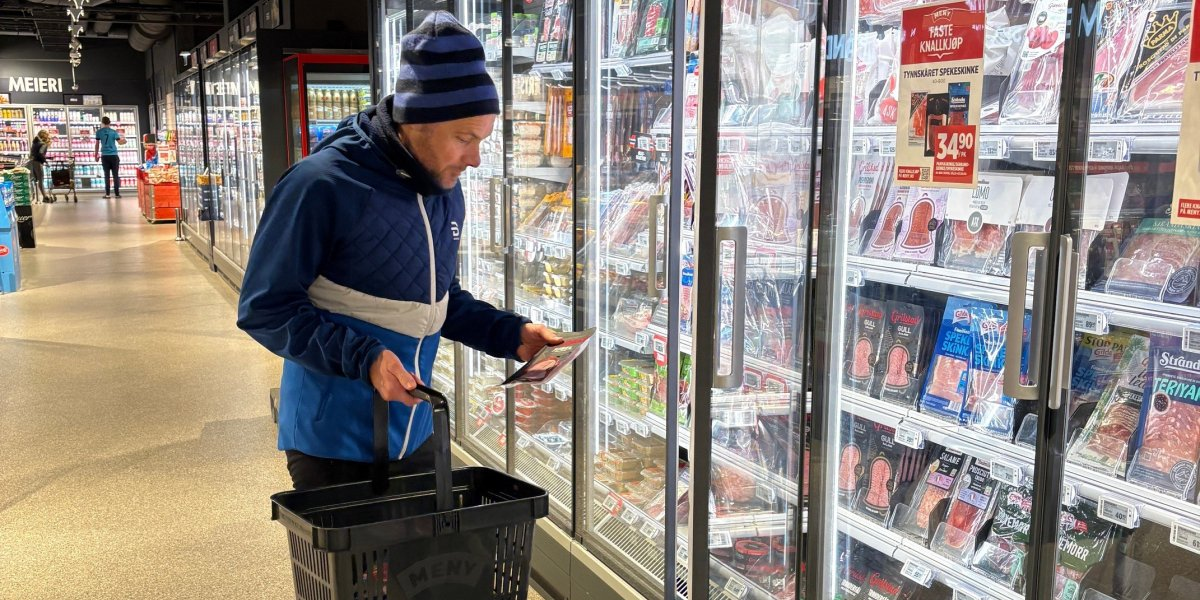How does labeling affect consumers? Studies show that many find the information on store shelves far too complicated. Photo: Hege Fantoft Andreassen
We don't notice food labeling
Despite growing awareness of climate and sustainability issues, new studies reveal that few Norwegians consider climate impact when shopping for groceries. Could better food labeling change our habits?
Frode Alfnes
This content is originally produced for our Norwegian newlsetter. Translation by AI, reviewed by author.
– When people choose food, they base their decisions on what matters most to them—often taste, price, or health. Other factors like animal welfare and sustainability rank far lower for most shoppers, says Frode Alfnes, professor of economics at NMBU.
New studies from the research project VOM reveal a wide gap between societal goals and individual choices at the checkout. The food sector has become an information jungle, with fierce competition for consumers' attention.
– As a result, much of the labeling and information fails to register with consumers, says Alfnes, pointing to studies his team conducted on climate labeling and information in Nordic online grocery stores.

|
– Many consumers say they care about seasonal products, local goods, and small-scale production. This connects partly to sustainability, but not necessarily in direct ways, he notes.
Conflicting messages
Alfnes argues that communication about sustainable food choices pulls consumers in too many directions.
– For messaging to actually influence our food choices, it needs to be far more consistent. We can't reasonably expect consumers to make environmental choices when signals from politicians and other key players conflict—and unfortunately, they do, says Alfnes.
He also emphasizes that availability is critical: green alternatives must be readily available in stores and priced competitively with other products. Taste proves absolutely essential, both for repeat purchases and for getting consumers to recommend products to others.
– We also need to ask ourselves whether we should try to reach everyone, or focus on those we're most likely to influence. You can't expect well over half the Norwegian population to respond to sustainability and climate information about food. Some consumers make climate-conscious choices, but the vast majority don't, says Alfnes. He believes much of the solution lies in policy measures beyond simply placing responsibility on consumers.
– Most consumers aren't willing to shoulder that responsibility. We need to think long-term—work on changing people's attitudes and social norms, while also examining what we can do about production methods and pricing. It would help enormously if Norwegian authorities could align on a coherent direction for food and climate policy. Policies aimed at promoting better climate choices in stores can't rely on consumers simply doing better—because that won't happen, Alfnes concludes.
The Keyhole is one of the labeling schemes meant to make it easier to make healthier choices. Photo: Jørgen Fantoft Kleven
Consumers' choices and values
CICERO doctoral candidate Nora Ytreberg has studied climate information across various Nordic online grocery stores.
– I've examined what tools Oda uses to influence its customers, and what effects these actually produce. Consumers are a diverse group—old and young, with varying incomes—and food labeling doesn't affect everyone the same way, she observes.
– Values and habits present the biggest barriers to shifting our diets in a climate-friendly direction. For some people, climate labels are off-putting; for others, they're a helpful nudge, says Ytreberg. Read the full interview: Climate-conscious food choices
